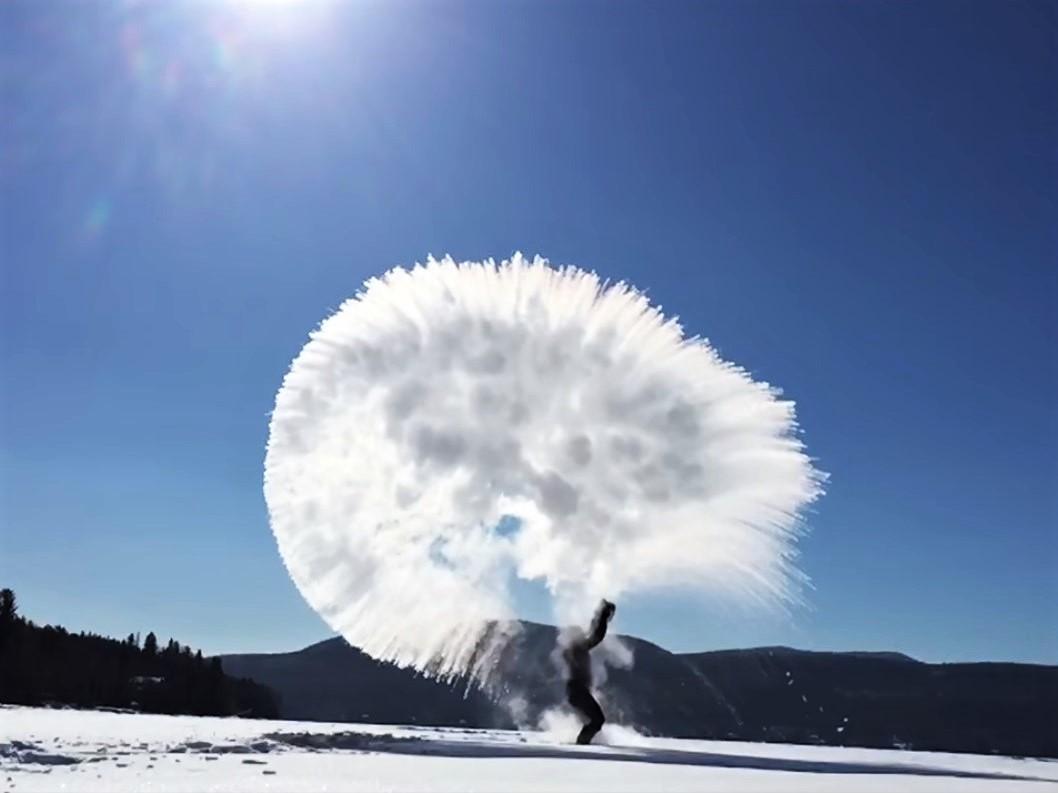Why does boiling water turn to snow when it's cold?
The polar vortex means it’s so cold that water will disappear into the air if you throw it – here’s why
Your support helps us to tell the story
From reproductive rights to climate change to Big Tech, The Independent is on the ground when the story is developing. Whether it's investigating the financials of Elon Musk's pro-Trump PAC or producing our latest documentary, 'The A Word', which shines a light on the American women fighting for reproductive rights, we know how important it is to parse out the facts from the messaging.
At such a critical moment in US history, we need reporters on the ground. Your donation allows us to keep sending journalists to speak to both sides of the story.
The Independent is trusted by Americans across the entire political spectrum. And unlike many other quality news outlets, we choose not to lock Americans out of our reporting and analysis with paywalls. We believe quality journalism should be available to everyone, paid for by those who can afford it.
Your support makes all the difference.The arrival of a polar vortex in the US means people are once again stepping outside into sub-zero temperatures to throw boiling water into the air.
Since the advent of social media it has become a winter ritual, with videos of the spectacular effect currently blossoming across the internet.
If done correctly, the boiling water blooms into a white cloud as soon as it hits the freezing air, making it appear like it has turned instantly to snow.
But the science behind the phenomenon shows this isn't exactly what is happening. Instead, the hot water is actually evaporating into steam, before condensing into tiny droplets of water that then freeze into a solid state.
Essentially, the very high temperature of the water combined with the very low temperature of the air causes the water to pass through its three states almost instantaneously – from liquid to gas, then to liquid, then to solid.
It might sound more dramatic that the water is hot – but that makes it more likely to happen. Since the water is warmer it evaporates more quickly, allowing it to turn to steam as soon as it is thrown.
The cold air can't hold that vapour, so almost as soon as that process happens it changes once again into droplets of liquid – which are so small that the air around them causes them to freeze instantly – and turns into a solid.
Because the effect works with boiling water, it is dangerous for anyone who tries it. One person in Madison, Wisconsin was treated for burns after throwing scalding water into the air, local media reported.
Hundreds of videos of the billows have been shared on Twitter and Facebook, though not all attempts have been successful.
The experiment has even been attempted by people with high-powered water pistols.
Temperatures need to be around -30 degrees celsius and below before the trick actually works, so it is unlikely people in the UK will be able to do it despite the current cold snap.
Anyone attempting it before the mercury has reached that low risks covering themselves in boiling water.

One person in Madison, Wisconsin was treated for burns after throwing scalding water into the air, local media reported.
A spate of accidents also occurred in 2014, following a similar drop in temperatures across the US.

Join our commenting forum
Join thought-provoking conversations, follow other Independent readers and see their replies
Comments